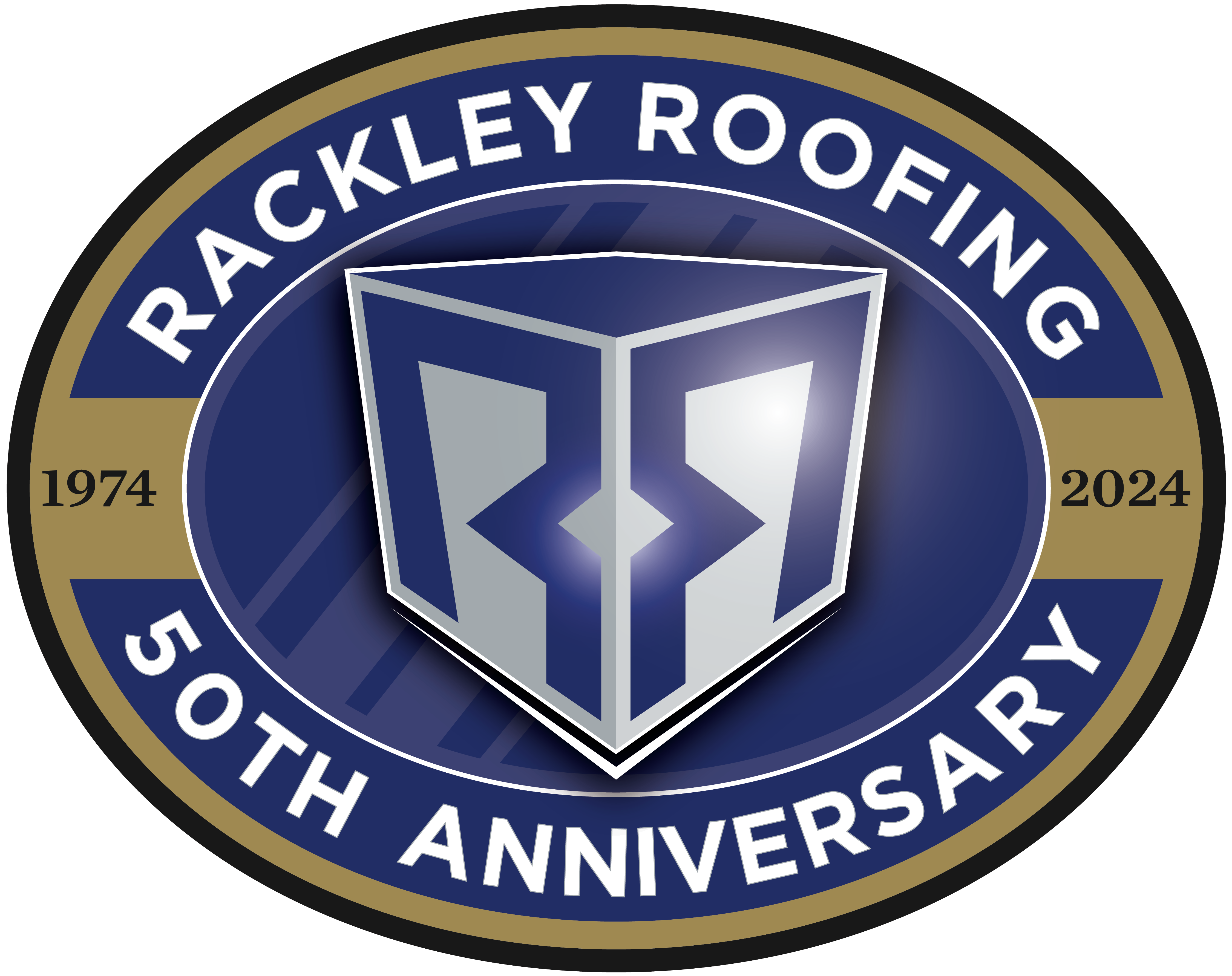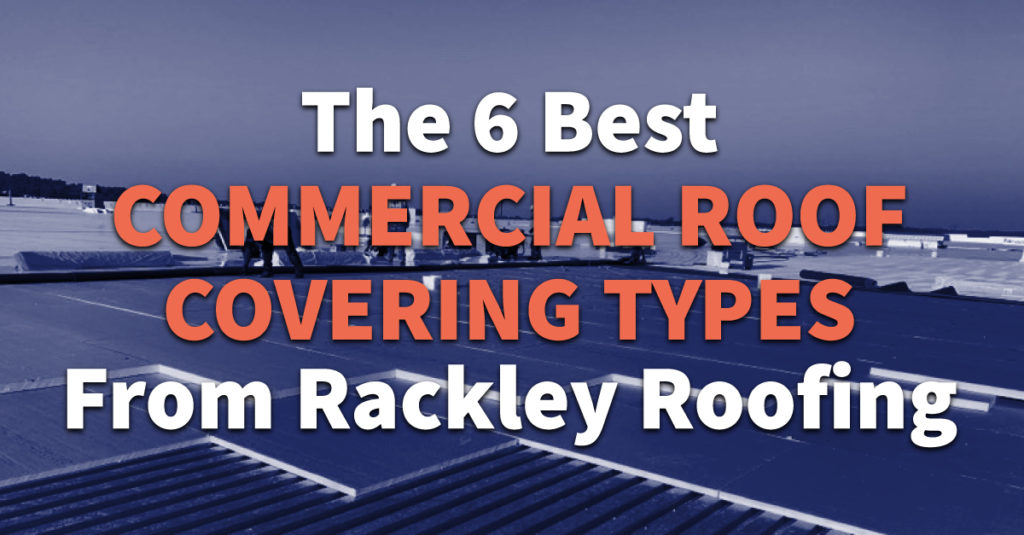At Rackley Roofing, we know that many commercial building owners are blissfully unaware of the type of roof protecting their business. Commercial roof covering types have evolved through the years to offer ideal solutions to every client. The six superior commercial roof coverings outlined below all offer durability, protection, and reliability.
BUR
Built-up Roofing (BUR), also called Smooth Modified BUR or tar and gravel roofing, is a century-old commercial roofing system. A BUR roof is made of multiple, alternating layers of bitumen (asphalt) and reinforcing fabrics. These meld together to create a complete, highly water-resistant membrane. BUR is notable for its long track record, durability, and a lifespan of between 15 and 20 years with proper maintenance.
BUR roofing requires consistent, attentive inspections and maintenance to deal with common issues:
- Separated seams
- Blistering
- Asphalt cracks
- Uneven or wavy surface
Moisture trapped within the BUR layers is a leading cause of degradation in this type of roof. Be sure to work closely with your commercial roofer to maintain your BUR roof at its best. Work with your commercial roofer to ensure consistent, thorough maintenance, including annual inspections, spot repairs, and careful attention to ballast coverage. Please note: Rackley Roofing does not install hot BUR systems.
EPDM
Ethylene propylene diene monomer (don’t worry; everybody abbreviates it) is a flexible, durable synthetic rubber sheet material. Though it only comes in two colors — black and white — it is a versatile commercial roof covering that provides energy efficiency and easy maintenance.
EPDM is notable for its comparatively low cost, longevity, and fire resistance. Some building owners find it less attractive than other commercial roof covering types but are generally pleased with its energy efficiency and straightforward maintenance.
The most critical work your facilities crew or commercial roofing partner can do with your EPDM roof is to keep it clean. Synthetic rubber can tear or be gouged by debris, so leaves, twigs, dirt, and other organic debris should be cleared off periodically.
Metal
Some commercial roof designs require metal roofing. Whether you need custom-fabricated or factory-made metal panel roofing, metal is an excellent, long-wearing alternative to shingles in steep-slope environments.
Metal roofing of all types is notable for its fantastic lifespan (50+ years) and easy maintenance. If your commercial roofer and facilities crews can preserve the finish on your metal roof, it can outlast every other commercial roofing material. The finish, not the metal itself, is the key to a long life. This makes annual inspection and maintenance crucial.
PVC
Polyvinyl chloride (PVC) is, chemically, the same material in a single-ply membrane as the patio furniture you may have. The enormous difference between your rigid PVC chair and the flexible, tough PVC membrane on a commercial roof is the scrim that provides fantastic strength. PVC roofs easily last 20 years, are highly reflective (which saves you energy), and easily maintained.
PVC roofing is not as inexpensive as other materials to install, but its long life and reliability quickly compensate for up-front costs. PVC single-ply membrane holds up well against wind, chemicals, scouring, and heat.
TPO
Thermoplastic Polyolefin (TPO) single-ply membrane is a popular, emerging roofing system for industrial and commercial facilities. It is a superior energy-efficient choice, withstands exposure to the sun’s ultraviolet rays without degradation, and can hold up against ozone gas and chemical exposure.
TPO is very flexible, conforming to irregular roof surfaces easily. It has a lifespan of around 15 to 20 years with good, regular maintenance. Keeping the roof very clean boosts its reflectivity and adds to your energy savings.
Regular inspections, especially for mechanically adhered TPO roofing, can extend the roof’s life. The membrane’s expansion and contraction under heat can cause fastener holes to elongate, allowing water to penetrate.
Green Roofing
Green roofing and pavers can transform your commercial low-slope roof into a valuable, enjoyable space for employees and clients. If your roof is designed to handle live loads, green roofing is a beautiful and practical option.
Green roofing combines living plants (small trees, grasses, and sedges) with a complete drainage system while protecting your business with a weather-resistant, water-shedding roof. Your roof is no longer only utilitarian; it becomes a green oasis for employees and visitors to enjoy.
Green roofing also naturally helps with energy efficiency since its many layers provide heat absorption, reflectivity, and convective cooling. Various methods are available, including convenient, interlocking soil receptacles floating slightly above the low-slope roof membrane.
Green roofing can be a public relations boon for your business, providing a valuable backdrop for advertising. The plants, soil, and receptacles do require near-constant attention to prevent overgrowing plants or water infiltration.
Please contact us today at Rackley Roofing to find out more about the superior roofing materials we offer. Rackley Roofing is proud to provide a complete menu of roofing solutions, from inspection to maintenance to installation, to industrial and commercial customers throughout the southeastern United States.




